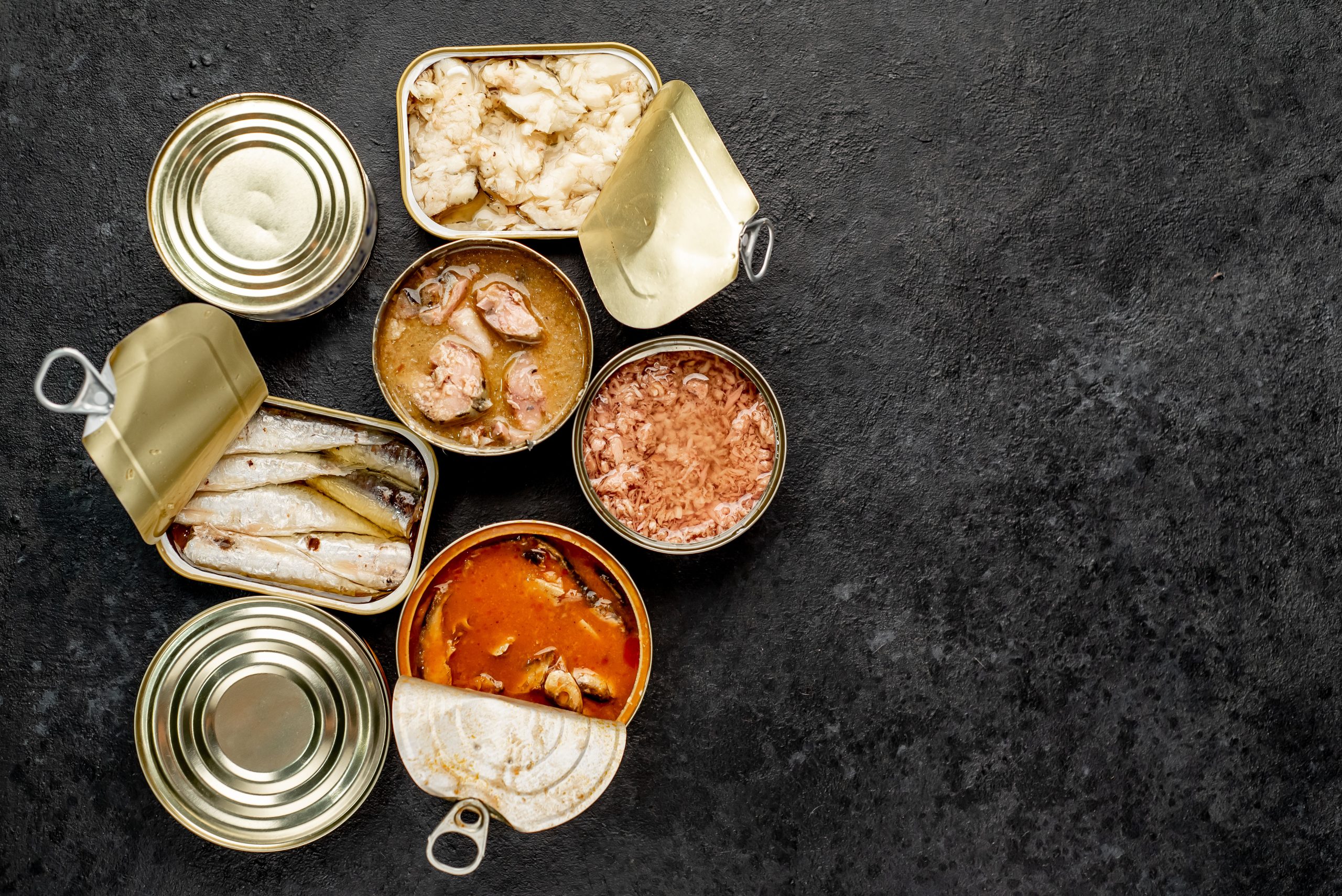Like a delicate balancing act, determining the right amount of fish to incorporate into your diet requires careful consideration. In this discussion, we will shed light on the recommended guidelines for consuming canned fish, particularly tuna, while keeping potential mercury contamination in mind. By understanding the risks and knowing the proper serving sizes, you can make informed choices about how much fish to enjoy each week. But that’s not all – we’ll also explore the symptoms of mercury poisoning and other fish species to avoid. So, let’s dive in and uncover everything you need to know for a safe and delicious seafood experience.
Safe Tuna Consumption Guidelines for Adults and Children
How much tuna can you safely eat each week? The amount of tuna you can consume depends on your weight and the type of tuna you choose. Canned albacore tuna contains three times more mercury than canned light tuna, so it’s important to consider this when making your selection. For adults, it is generally safe to consume two to three 4-ounce servings of light tuna per week. However, if you opt for albacore tuna, it is recommended to limit your consumption to only one 4-ounce serving per week. Children under 11 should stick to two servings of canned light tuna per week, with serving sizes varying according to age. It’s crucial to balance seafood consumption and choose safe alternatives to tuna, especially for children, to avoid excessive mercury exposure. Keep in mind that these guidelines are based on the total fish intake for the week, not just tuna. It’s also important to note that fish with higher mercury levels should be completely avoided by children.
Safe Tuna Consumption Guidelines for Pregnant Individuals
Continuing our discussion on safe tuna consumption guidelines, let’s now focus on the specific recommendations for pregnant individuals. It is important to be mindful of safe tuna consumption during pregnancy to avoid potential mercury exposure. Here are the guidelines to follow:
- Limit your tuna intake to two to three servings of canned light tuna per week. Each serving should be four ounces, which is equivalent to a typical can of tuna.
- Avoid other varieties of tuna, such as albacore and yellowfin, or limit their consumption to only one serving per week due to their higher mercury content.
- It is crucial to monitor your tuna intake during pregnancy to prevent heightened mercury levels. Excessive consumption of tuna can lead to mercury poisoning, which can cause neurological symptoms and impairments.
- Consider safe fish alternatives during pregnancy. Opt for fish with lower mercury levels, such as salmon, shrimp, and catfish, which provide essential nutrients without the risk of excessive mercury exposure.
Symptoms of Mercury Poisoning
Mercury poisoning can cause a range of neurological symptoms and impairments. The symptoms of mercury poisoning include coordination loss, memory problems, seizures, and tremors. Additionally, individuals may experience loss of peripheral vision, impaired speech, hearing, or movement, muscle weakness, and a numb, pins and needles feeling. It is important to note that excessive consumption of tuna can lead to increased exposure to mercury. To prevent heightened mercury levels, it is recommended to monitor your tuna intake and balance seafood consumption by supplementing the diet with other types of fish. It is also crucial to be aware of mercury levels in other fish, not just tuna. Fish such as bigeye tuna, king mackerel, marlin, orange roughy, shark, swordfish, and tilefish have high mercury levels and should be avoided. By following these guidelines and being mindful of mercury levels, you can prevent mercury poisoning and enjoy the health benefits of seafood consumption.
Other Fish to Avoid With High Mercury Levels
To ensure your mercury intake remains at safe levels, it’s important to be aware of other fish species that should be avoided due to their high mercury content. Here are some fish species to avoid:
- Bigeye tuna: This species of tuna can have higher mercury levels, so it’s best to avoid it to minimize health risks.
- King mackerel: King mackerel is known to accumulate high levels of mercury, making it unsafe for consumption.
- Marlin: Marlin is a large predatory fish that can contain high levels of mercury, posing potential health risks.
- Shark: Sharks are known to have high mercury levels due to their position at the top of the food chain, so it’s best to avoid them.
These fish should be completely avoided by individuals, especially children, pregnant individuals, and breastfeeding individuals, due to the potential health risks associated with mercury accumulation. Instead, consider consuming fish with lower mercury levels, such as light tuna, to enjoy the health benefits of fish while maintaining safe intake levels. Remember to consider the overall weekly consumption of all fish, not just tuna, to ensure a balanced and safe diet.
Additional Information
For more detailed and precise recommendations on safe tuna consumption based on body weight, MedicalNewsToday provides additional information. Fish consumption offers numerous benefits, such as being an excellent source of protein and omega-3 fatty acids, which are essential for brain and heart health. However, it’s important to be aware of the health risks associated with mercury exposure. Mercury levels vary in different types of fish, with canned albacore tuna containing three times more mercury than canned light tuna. To minimize the risk, it’s crucial to follow safe consumption guidelines. Adults can typically consume two to three 4-ounce servings of light tuna per week, while albacore tuna should be limited to only one 4-ounce serving. Children under 11 should limit their intake to two servings of canned light tuna per week, avoiding other varieties with higher mercury levels. Pregnant individuals can safely consume two to three servings of canned light tuna per week, avoiding fish with higher mercury levels. For those concerned about mercury levels, alternative protein sources like salmon, sardines, and shrimp can be included in the diet. By following safe consumption guidelines and considering alternative protein sources, individuals can enjoy the benefits of fish consumption while minimizing the health risks associated with mercury exposure.
Mercury in Fish
Fish naturally contain varying levels of mercury, a potent neurotoxin that can accumulate in their flesh, especially in larger fish higher up the food chain. Here are some key points to consider about mercury in fish:
- Mercury pollution: Mercury pollution has increased due to industrialization, but methylmercury accumulation in fish is a natural process.
- Health risks: Mercury in fish, primarily in the form of methylmercury, poses health risks, especially to the nervous system.
- Mercury levels in seafood: The larger the fish, the higher the mercury content. Predatory fish like shark, swordfish, and marlin tend to have higher mercury levels.
- Environmental impact: Even fish caught in the middle of the ocean can contain methylmercury. This highlights the widespread impact of mercury pollution on aquatic ecosystems.
Considering the potential health risks and environmental impact, it is important to follow fish consumption recommendations to minimize mercury exposure. The FDA provides guidelines for safe fish consumption, categorizing fish as best choices, good choices, and choices to avoid based on their mercury content. Canned light tuna, primarily made from skipjack, is considered a best choice with low mercury levels. Albacore tuna, or white tuna, contains more mercury but is still categorized as a good choice. It is recommended to consume two to three servings of fish per week, including canned light tuna, while limiting albacore tuna to one serving per week. By adhering to these recommendations, you can enjoy the health benefits of fish while minimizing mercury exposure.
Tuna Species in Canned Tuna
The main tuna species used in Australian brands of canned tuna are skipjack and yellowfin. These species are generally smaller compared to albacore and larger tuna species, which helps reduce the risk of mercury exposure. Concerns about high mercury concentrations in canned tuna are often associated with larger tuna species. The use of smaller tuna species in canned tuna is a positive factor in reducing mercury risk. When it comes to health benefits, canned tuna is a good source of protein, omega-3 fatty acids, and various vitamins and minerals. However, it is important to consider the environmental impact and fishing practices associated with tuna fishing. Overfishing and unsustainable fishing methods can have detrimental effects on tuna populations and marine ecosystems. Therefore, it is recommended to choose canned tuna brands that prioritize sustainable fishing practices. Additionally, it is important to note that the nutritional value of canned tuna may vary depending on the specific brand and processing methods used.
Safe Consumption Limits
What are the recommended safe limits for consuming fish, including canned tuna?
- Safe consumption limits are determined based on the mercury levels in fish.
- Guidelines for pregnant individuals suggest consuming two to three servings of canned light tuna per week, with a serving size of four ounces.
- Symptoms of mercury poisoning include coordination loss, memory problems, seizures, and tremors.
- Fish to avoid due to high mercury levels include bigeye tuna, king mackerel, marlin, orange roughy, shark, swordfish, and tilefish.
Following safe consumption limits is essential to minimize the risk of mercury poisoning. The guidelines for pregnant individuals recommend consuming two to three servings of canned light tuna per week, with a serving size of four ounces. It is important to be aware of the symptoms of mercury poisoning, which include coordination loss, memory problems, seizures, and tremors. To reduce mercury exposure, it is advisable to avoid fish with high mercury levels such as bigeye tuna, king mackerel, marlin, orange roughy, shark, swordfish, and tilefish. By adhering to these recommendations, you can enjoy the health benefits of fish while minimizing the potential risks associated with mercury.


